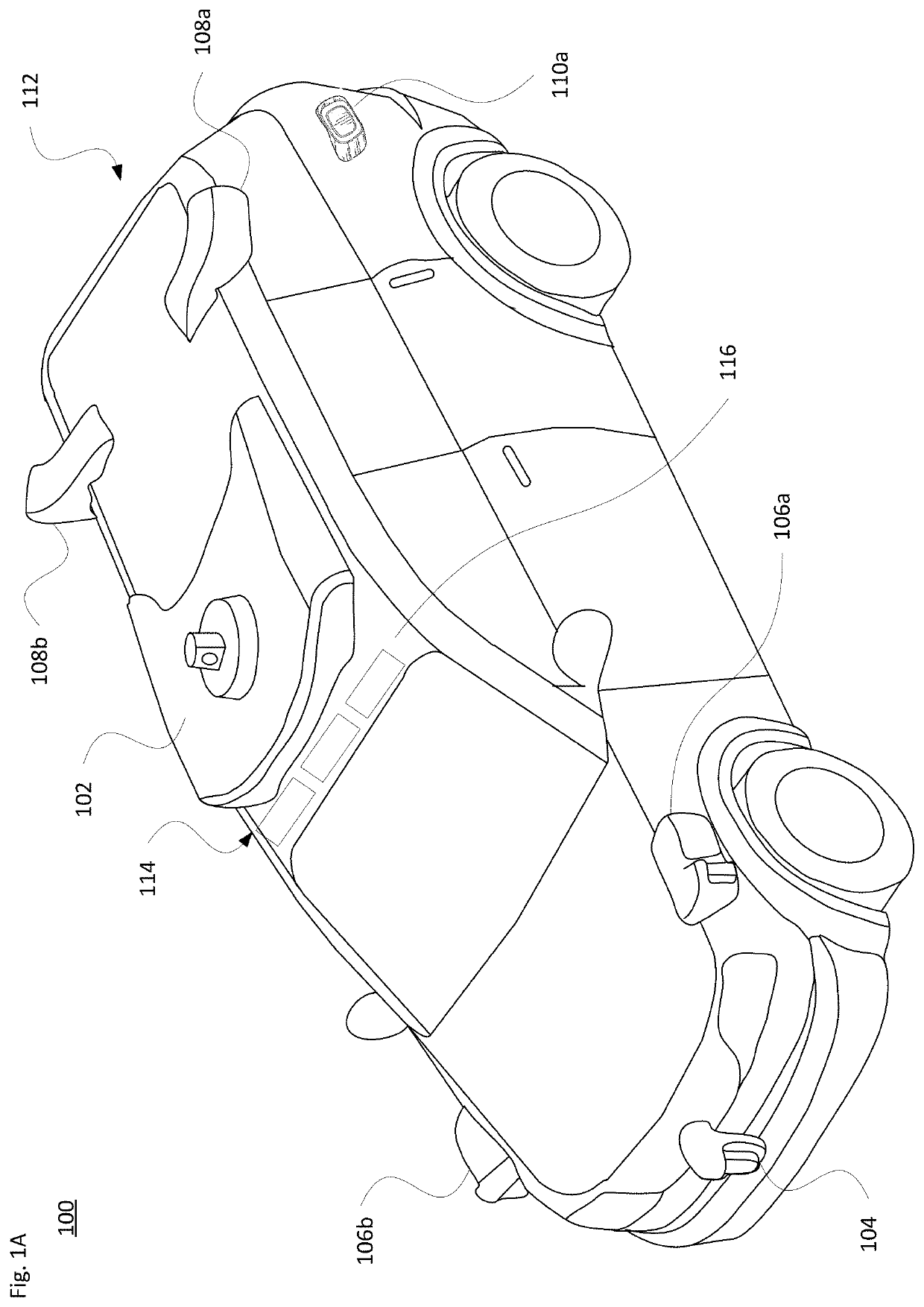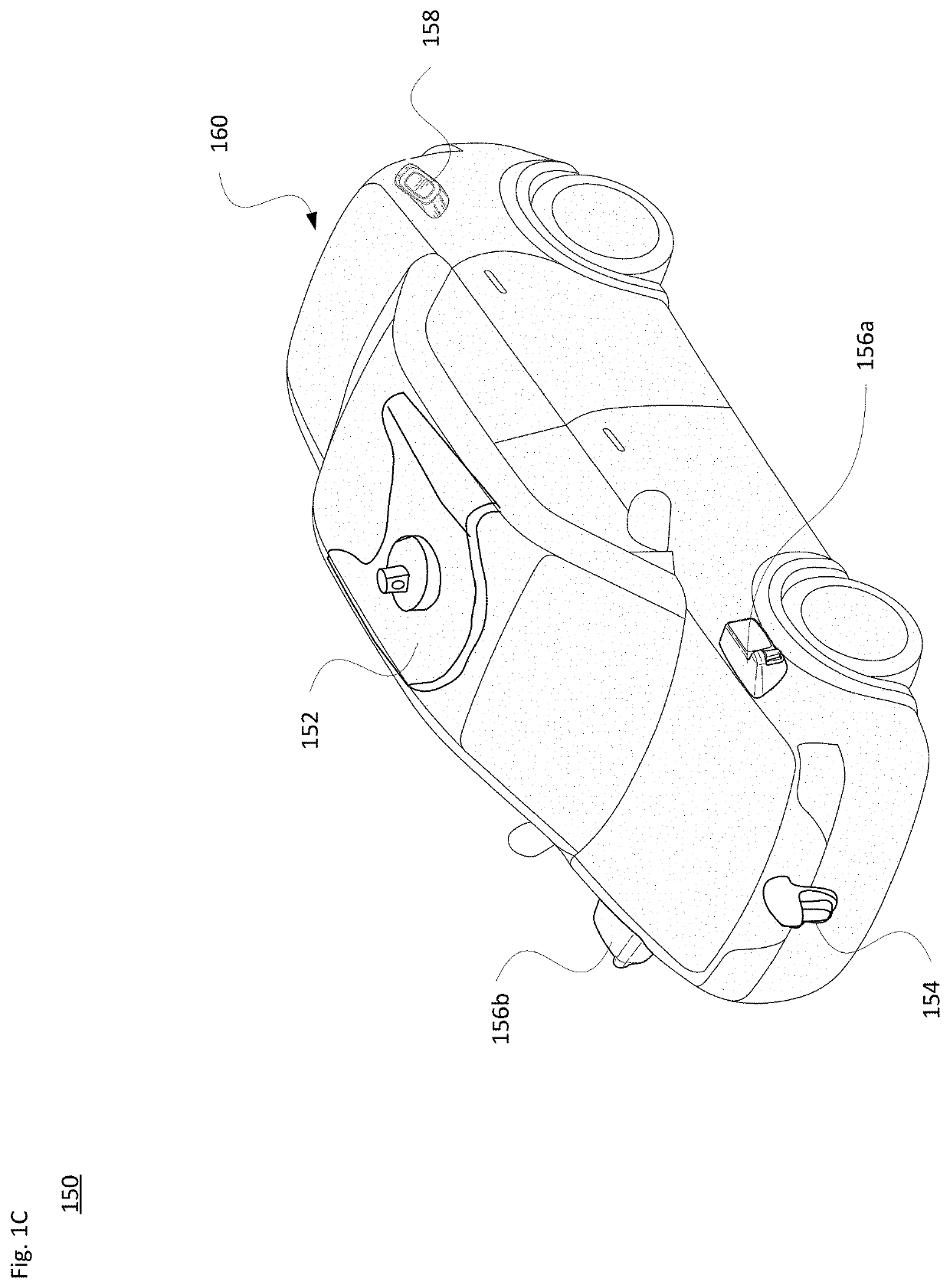Close-in Sensing Camera System
a camera system and sensor technology, applied in the field of exterior sensor systems, can solve problems such as affecting driving decisions and other autonomous operations, and achieve the effect of complete understanding of the environmen
- Summary
- Abstract
- Description
- Claims
- Application Information
AI Technical Summary
Benefits of technology
Problems solved by technology
Method used
Image
Examples
example vehicle
SYSTEMS
[0033]FIG. 1A illustrates a perspective view of a passenger vehicle 100, such as a minivan, sedan or sport utility vehicle. FIG. 1B illustrates a top-down view of the passenger vehicle 100. The passenger vehicle 100 may include various sensors for obtaining information about the vehicle's external environment. For instance, a rooftop housing 102 may include a lidar sensor as well as various cameras, radar units, infrared and / or acoustical sensors. Housing 104, located at the front end of vehicle 100, and housings 106a, 106b on the driver's and passenger's sides of the vehicle may each incorporate a lidar and / or other sensors. For example, housing 106a may be located in front of the driver's side door along a quarterpanel of the vehicle. As shown, the passenger vehicle 100 also includes housings 108a, 108b for radar units, lidar and / or cameras also located towards the rear roof portion of the vehicle. Other housings 110a, 110b may be located along the rear quarterpanels, for i...
example implementations
[0062]In view of the structures and configurations described above and illustrated in the figures, various implementations will now be described in accordance with aspects of the technology.
[0063]The environment around the vehicle can be viewed as having different quadrants or regions. One example 300 is illustrated in FIG. 3, which shows front, rear, right side and left side regions, as well as adjacent areas for the front right, front left, right rear and left rear areas around the vehicle. These regions are merely exemplary. The vehicle's perception system may cover some or all of the regions around the vehicle to provide as much information as possible about objects in the vehicle's external environment.
[0064]For instance, various sensors may be located at different places around the vehicle (see FIGS. 1A-C) to gather data from some or all of these regions. By way of example, the three sensors 116 of FIG. 1 may primarily receive data from the front, front left and front right re...
PUM
 Login to view more
Login to view more Abstract
Description
Claims
Application Information
 Login to view more
Login to view more - R&D Engineer
- R&D Manager
- IP Professional
- Industry Leading Data Capabilities
- Powerful AI technology
- Patent DNA Extraction
Browse by: Latest US Patents, China's latest patents, Technical Efficacy Thesaurus, Application Domain, Technology Topic.
© 2024 PatSnap. All rights reserved.Legal|Privacy policy|Modern Slavery Act Transparency Statement|Sitemap



